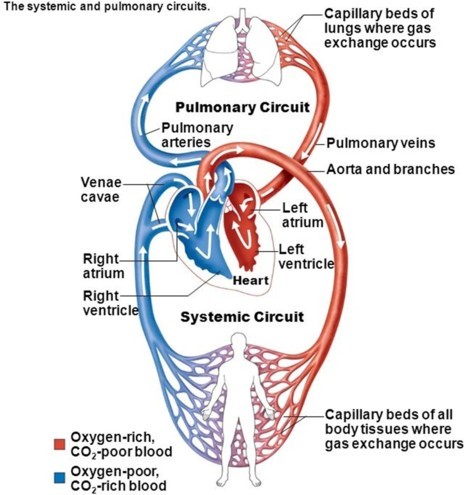Blood flow through a capillary is controlled by a precapillary sphincter, which opens or closes due to the requirements of the cells supplied by the capillary.
True
False
The Correct Answer is A
The correct answer is choice A. True.
Blood flow through a capillary is controlled by a precapillary sphincter, which opens or closes due to the requirements of the cells supplied by the capillary.
This allows blood to bypass the capillaries when they are not needed and to increase blood flow when they are needed.
Choice B. False is wrong because it contradicts the true statement in choice A. A precapillary sphincter is a ring of smooth muscle that surrounds the entrance of a capillary and regulates blood flow into it.
It is influenced by local factors such as oxygen, carbon dioxide, pH, and temperature.
Nursing Test Bank
Naxlex Comprehensive Predictor Exams
Related Questions
Correct Answer is C
Explanation
It explains that the primary immune response produces antibodies within five to ten days of exposure to antigens, while the secondary immune response produces antibodies within a day or two of subsequent exposure to the same antigen.
This is because the primary immune response involves the activation and differentiation of naive B cells into plasma cells and memory cells, while the secondary immune response involves the rapid activation of memory cells into plasma cells.
Choice A is wrong because the primary and secondary immune responses can occur in both children and adults.
Choice B is wrong because the primary immune response is slower than the secondary immune response in producing antibodies.
Choice D is wrong because both primary and secondary immune responses are important for the body’s ability to protect itself from pathogens.
The primary immune response generates immunological memory, while the secondary immune response provides a faster and stronger response to repeated infections.
Correct Answer is D
Explanation
The systemic circuit sends oxygen-rich blood to the tissues.

It is part of the circulatory system that carries blood away from the heart, delivers it to most of the organs and tissues, and returns it to the heart again.
Choice A is wrong because it describes the pulmonary circuit, which brings oxygen-poor blood from the heart to the lungs.
Choice B is wrong because it is the opposite of what the systemic circuit does.
The systemic circuit brings oxygen-rich blood from the heart to the tissues, not from the tissues.
Choice C is wrong because it is also the opposite of what the systemic circuit does. The systemic circuit sends oxygen-poor blood to the heart, not from the heart.
Whether you are a student looking to ace your exams or a practicing nurse seeking to enhance your expertise , our nursing education contents will empower you with the confidence and competence to make a difference in the lives of patients and become a respected leader in the healthcare field.
Visit Naxlex, invest in your future and unlock endless possibilities with our unparalleled nursing education contents today
Report Wrong Answer on the Current Question
Do you disagree with the answer? If yes, what is your expected answer? Explain.
Kindly be descriptive with the issue you are facing.
